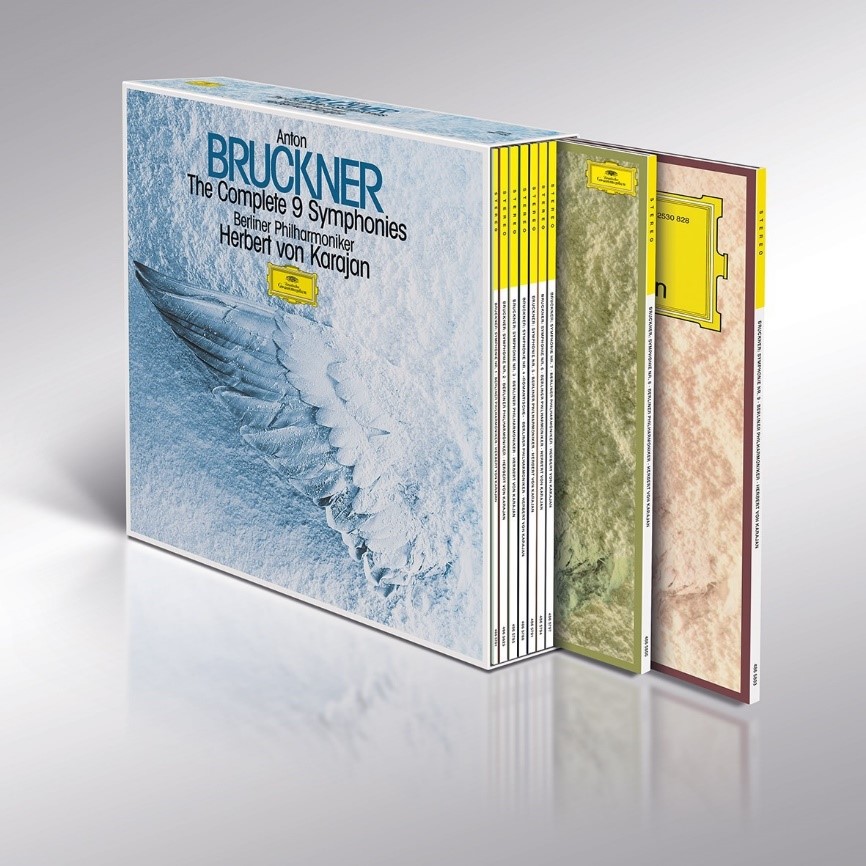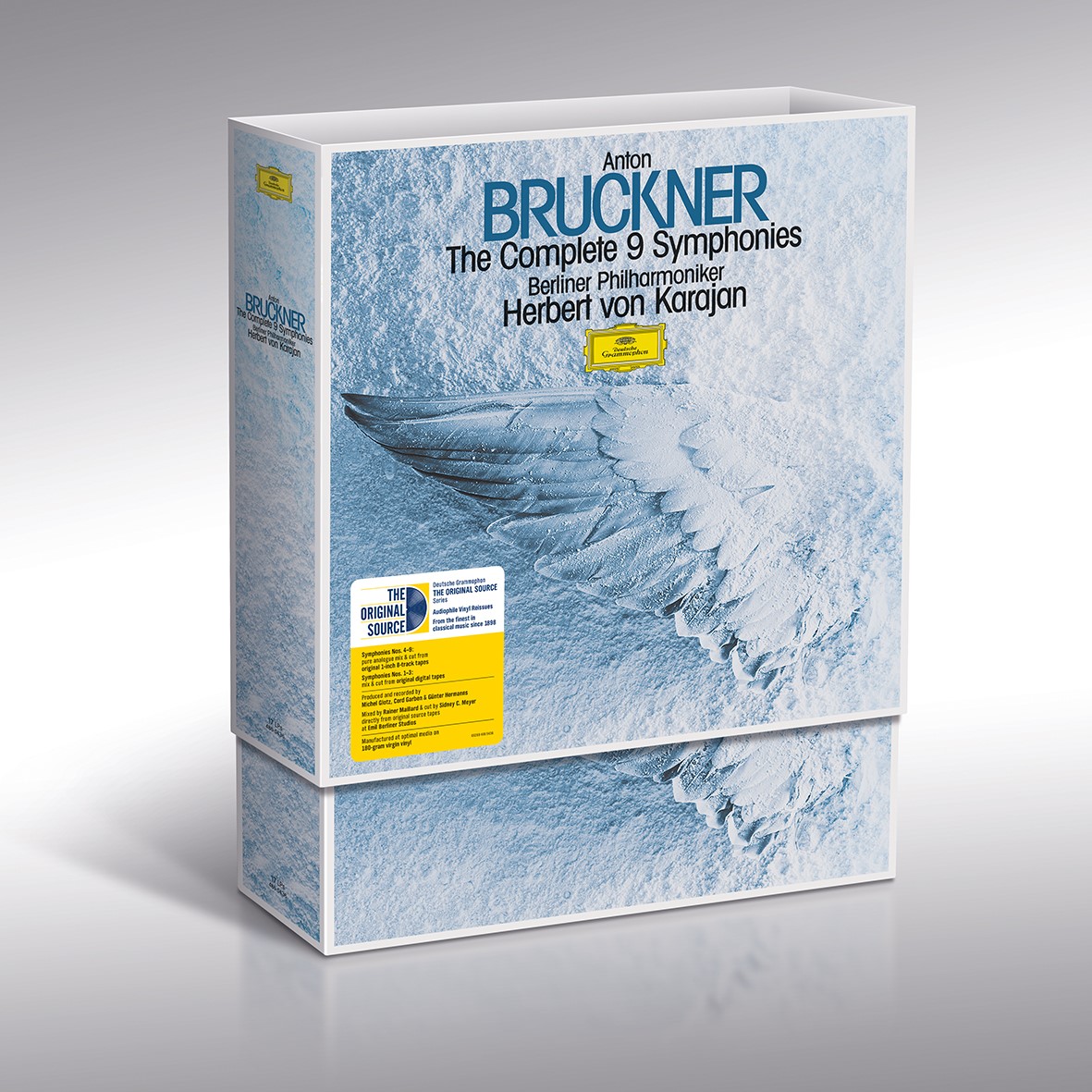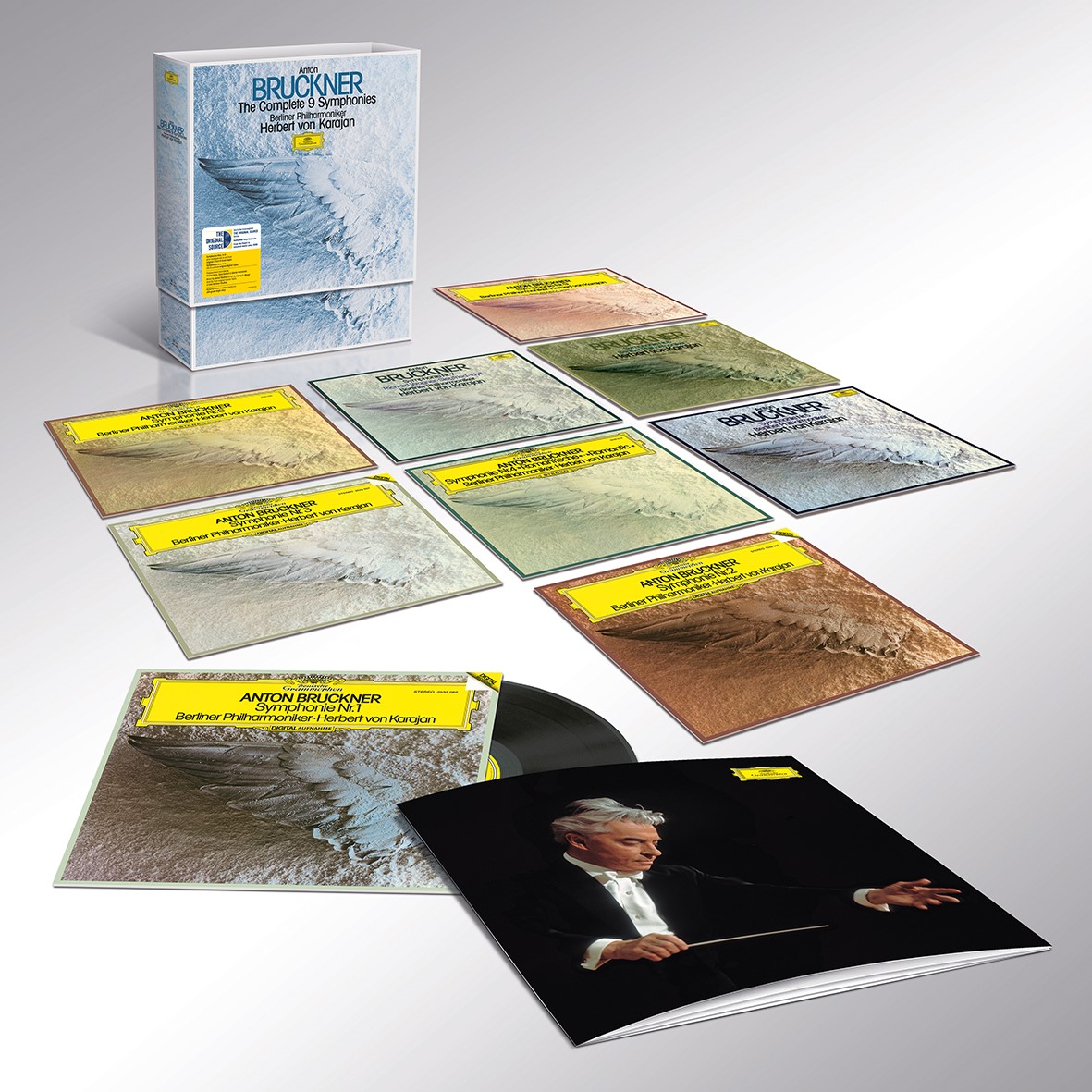Karajan + Bruckner, and The Next Generation of Deutsche Grammophon’s Original Source Vinyl Reissue Series
Emil Berliner Studios breaks new technological ground with this deluxe AAA reissue of Herbert von Karajan’s legendary Bruckner Symphony cycle
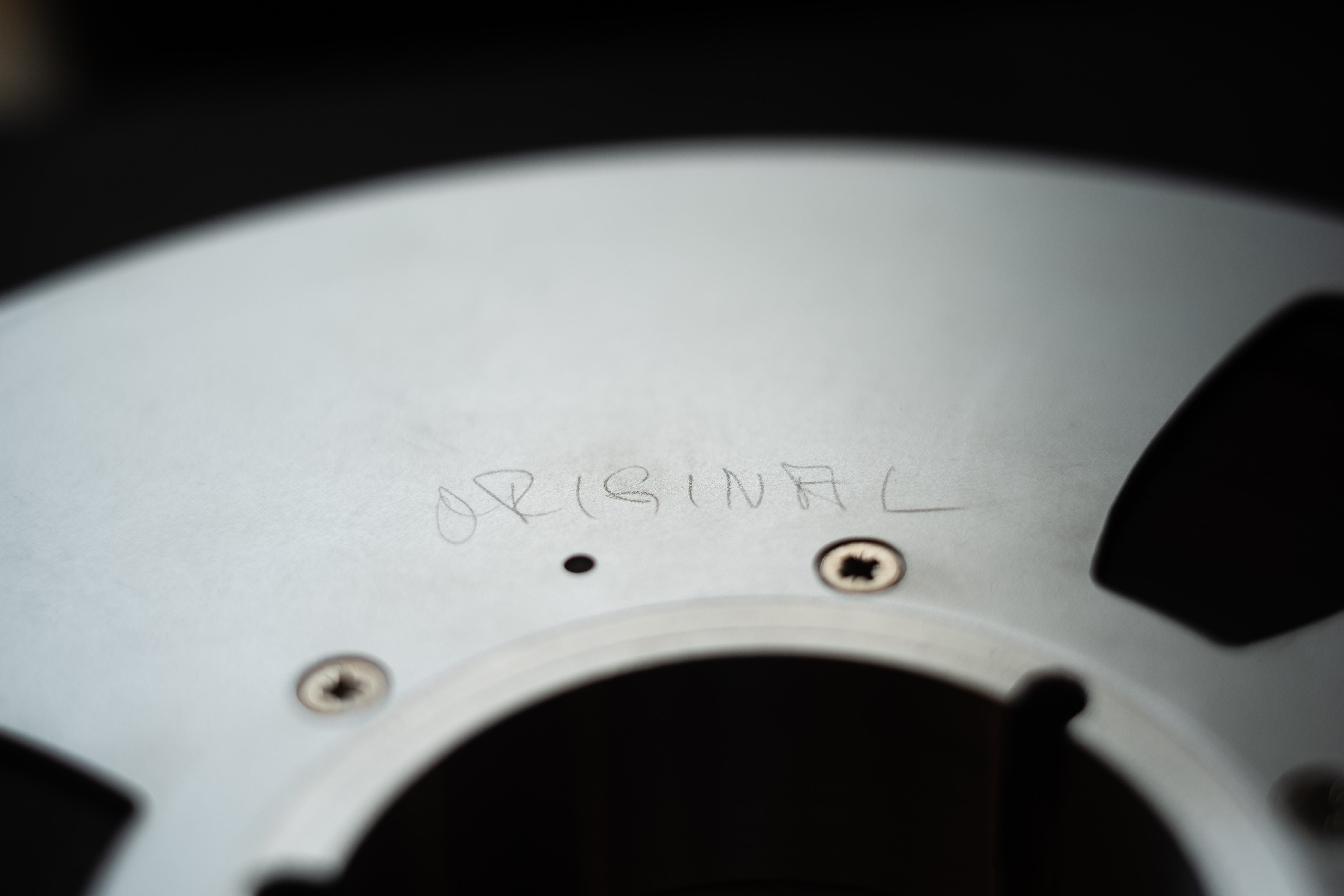
It’s finally official - and it’s HUGE news.
Herbert von Karajan’s legendary complete cycle of all the Bruckner symphonies is being re-released as part of the Original Source Series of deluxe vinyl editions, the centerpiece of Deutsche Grammophon’s celebrations for this year’s Bruckner bicentenerary.
That in itself is significant. The Karajan Bruckner cycle has long been considered one of the benchmark recordings in the catalogue.
But the importance of this release lies in the fact that, like all the other OSS releases so far, it is being mixed, mastered and cut directly from the multitrack master tapes. So, nothing new for the Original Source series - you say.
Actually something very new indeed!
The Bruckner cycle (with the exception of the first three symphonies, more on these later) was originally recorded to 8-track analogue. 8-track. All the previous OSS releases were derived from 4-track masters.
Yes - you read correctly. And you’re thinking this means that, unlike the previous Original Source reissues cut directly from the 4-track masters, these Bruckner recordings must have been cut from a 2-track stereo mix-down. Why? Because no one has ever mastered and cut vinyl directly from an 8-track master tape.
Well, actually, now they have. These records have been cut directly from the 8-track master tapes. And this is what makes this next phase in the DG OSS reissue program so groundbreaking.
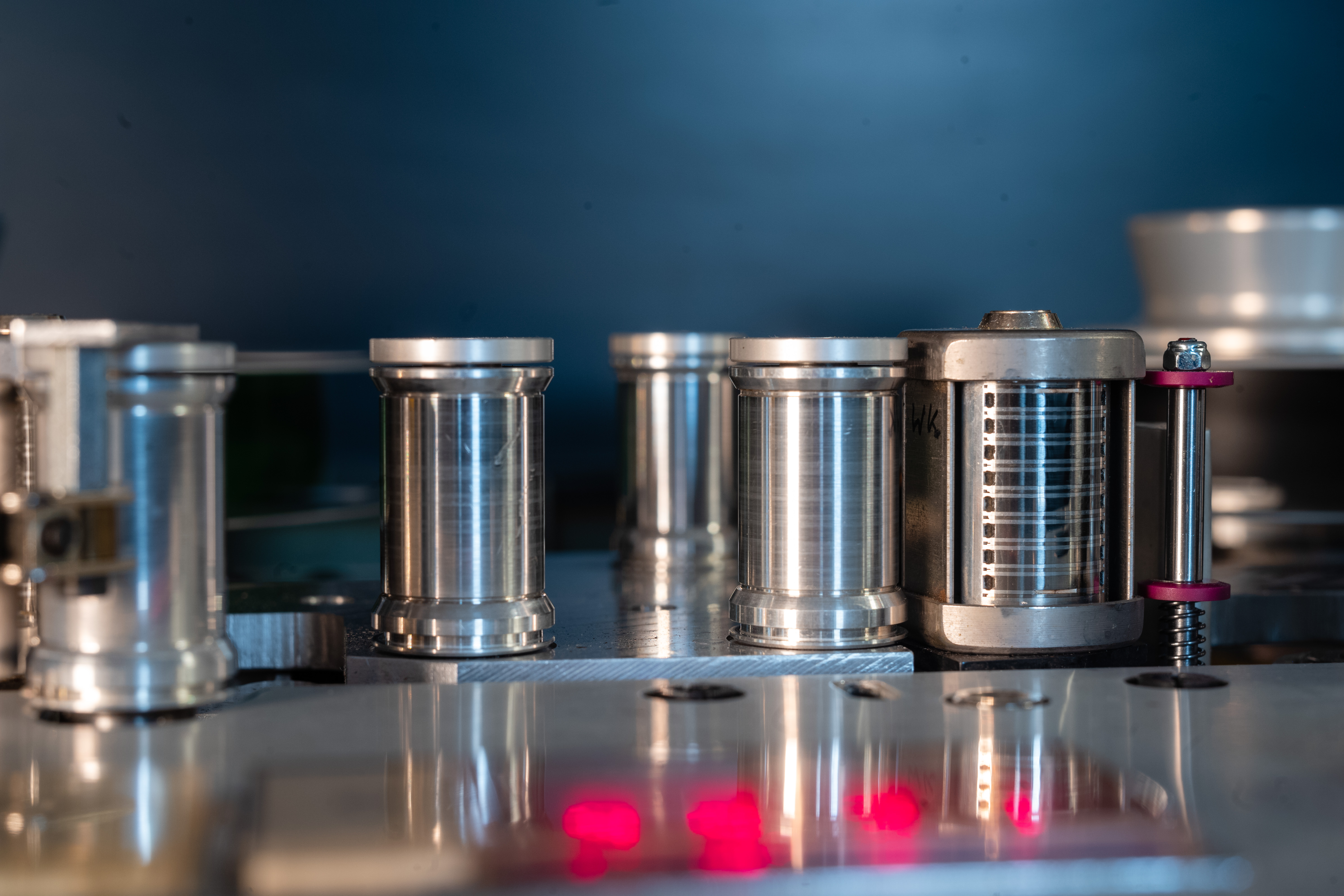
Rainer Maillard at Emil Berliner Studios has built a tape deck and mixing console that allows him to mix, master and cut directly from 8-track master tapes.
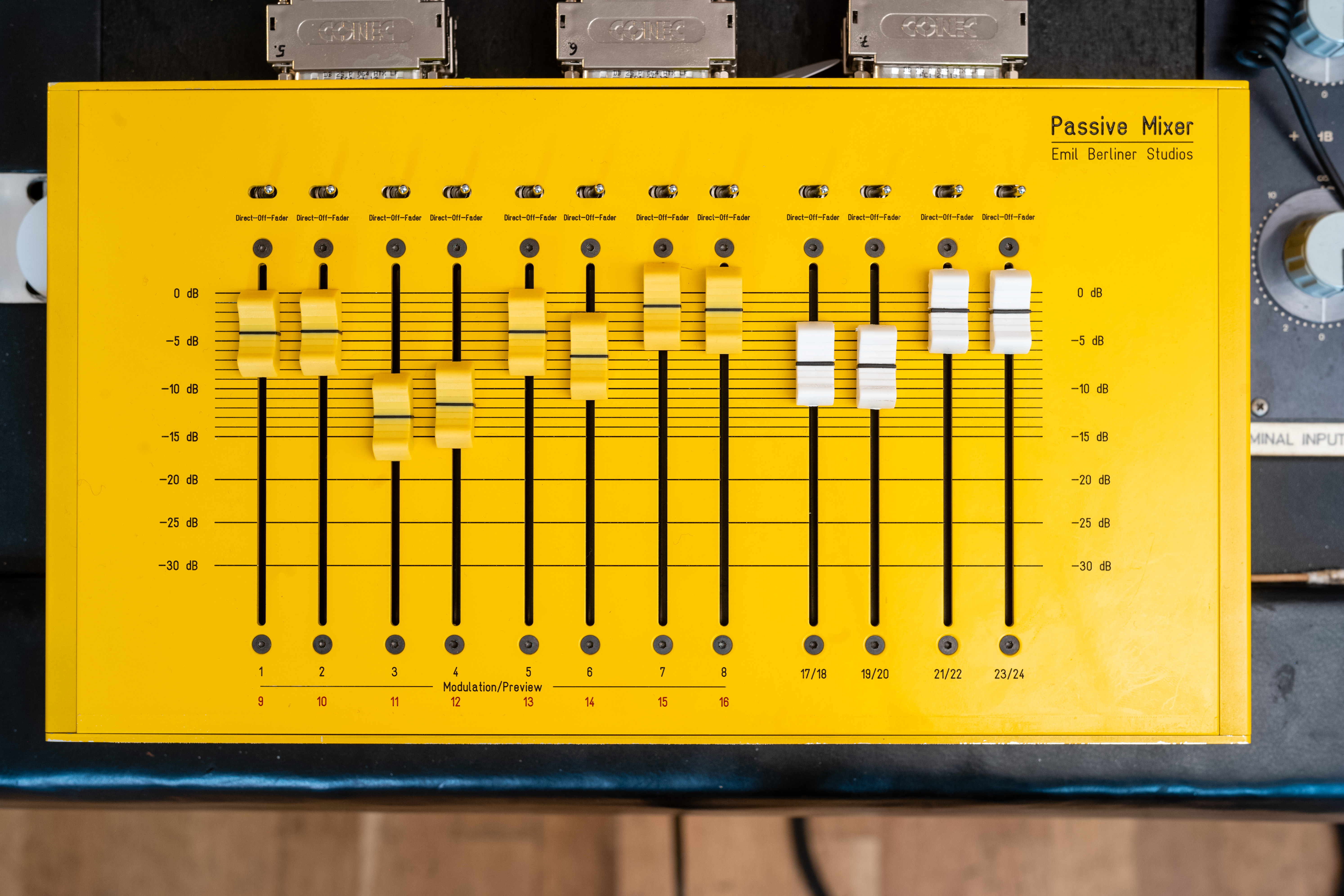 The specially built passive mixer: note the use of the classic yellow coloring of the iconic DG cartouche!
The specially built passive mixer: note the use of the classic yellow coloring of the iconic DG cartouche!
No mix-down to a stereo tape. Shortest possible path from the 8-track master tape to the cutting lathe.
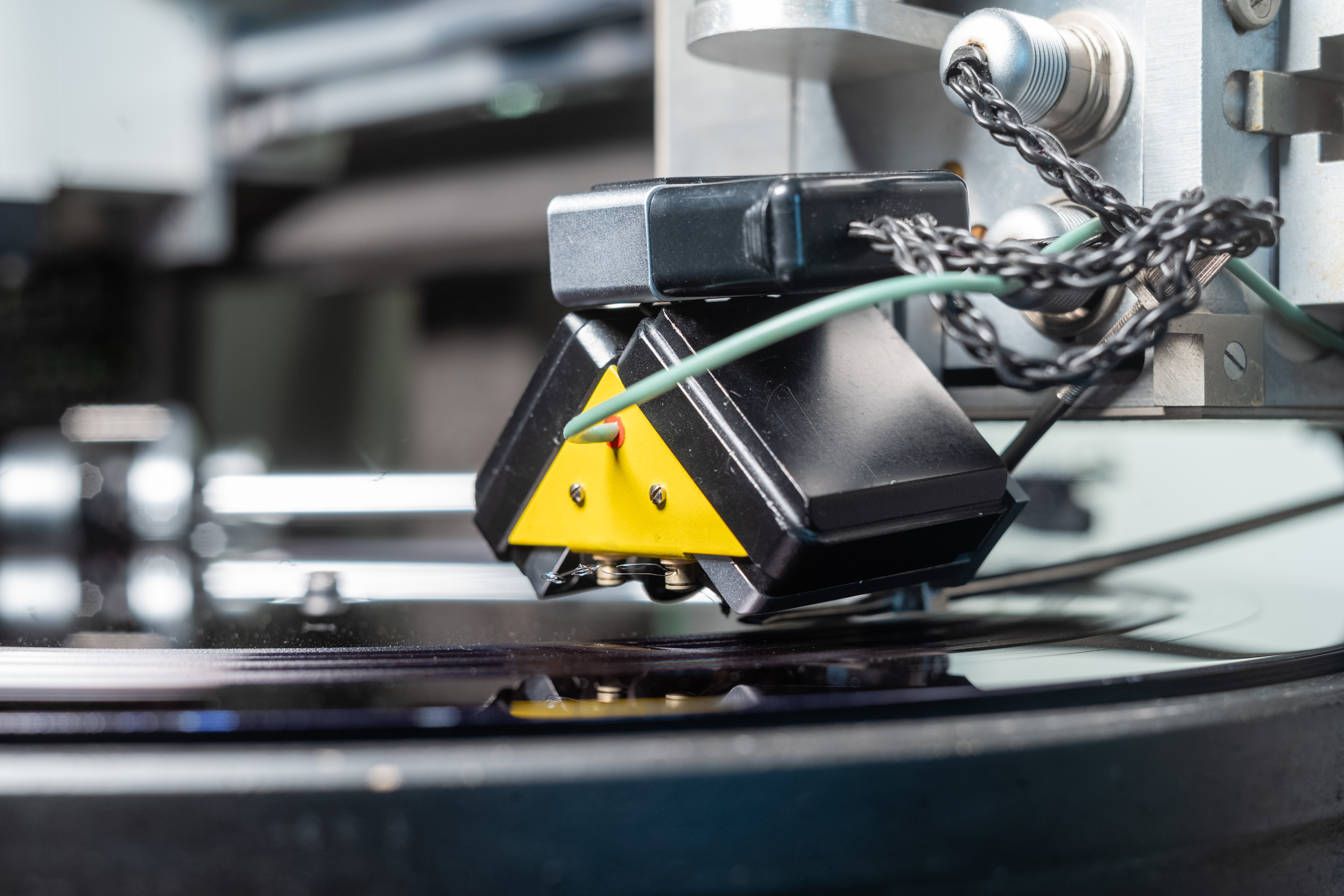
To my knowledge no-one has ever done this before. (If someone knows otherwise, please leave a comment below).
This is quite the technological feat (and certainly had its challenges - more details in the review to come). It’s a game changer.
I will confess that when I first heard from Rainer that they were doing this I was certifiably gobsmacked. And you should be too.
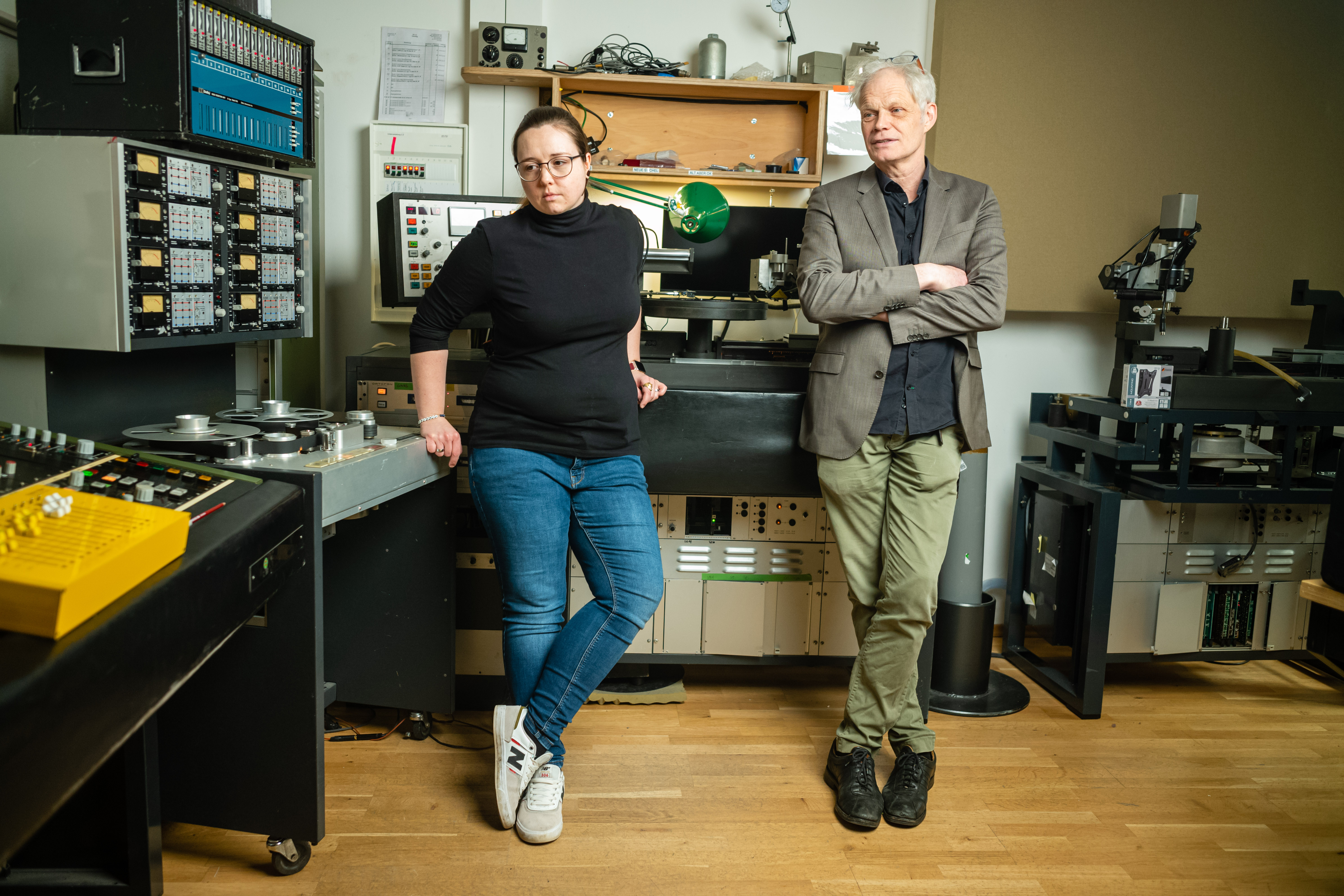 Sidney C. Mayer (l.) and Rainer Maillard at Emil Berliner Studios. Mixing console is on the left.
Sidney C. Mayer (l.) and Rainer Maillard at Emil Berliner Studios. Mixing console is on the left.
Included in this set will be an extensive essay by Maillard going over the technical side of remastering these recordings for vinyl. Here is a short extract from that essay:
“[Karajan’s] recordings both fascinate and divide audiophiles in terms of sound. With this reissue, we want to show that – with innovation and refinement – further sonic subtleties can be extracted from the master tapes, adding new audiophile dimensions to the so-called ‘Karajan sound’ … The aim of this new release is to preserve the highest possible sound quality for the analogue long-playing record. For both the analogue and the digitally produced symphonies, we are using the original multitrack tapes (with the exception of the Third Symphony, where the multitrack tapes are missing). This was the method used in DG’s Original Source Series of vinyl reissues released in 2023–2024: mixing and cutting directly from the original multitrack master tapes, without producing an intermediate ‘mix-down’ stereo tape. In this way we avoid going back one generation in sound quality in the mastering of the record, and thereby achieve maximum sonic fidelity to the master tape. Each movement was also cut to a separate LP side to get shorter playing times on the records (except for Symphony No. 1). This brings many benefits, including a much higher frequency response.” (Extract from: “Ways to Make Technology ‘Disappear’: Getting as Close as Possible to Karajan’s Original Bruckner Sound” by Rainer Maillard)
In the video below, you can watch Maillard and Meyer mastering and cutting the last movement of the 8th symphony.:
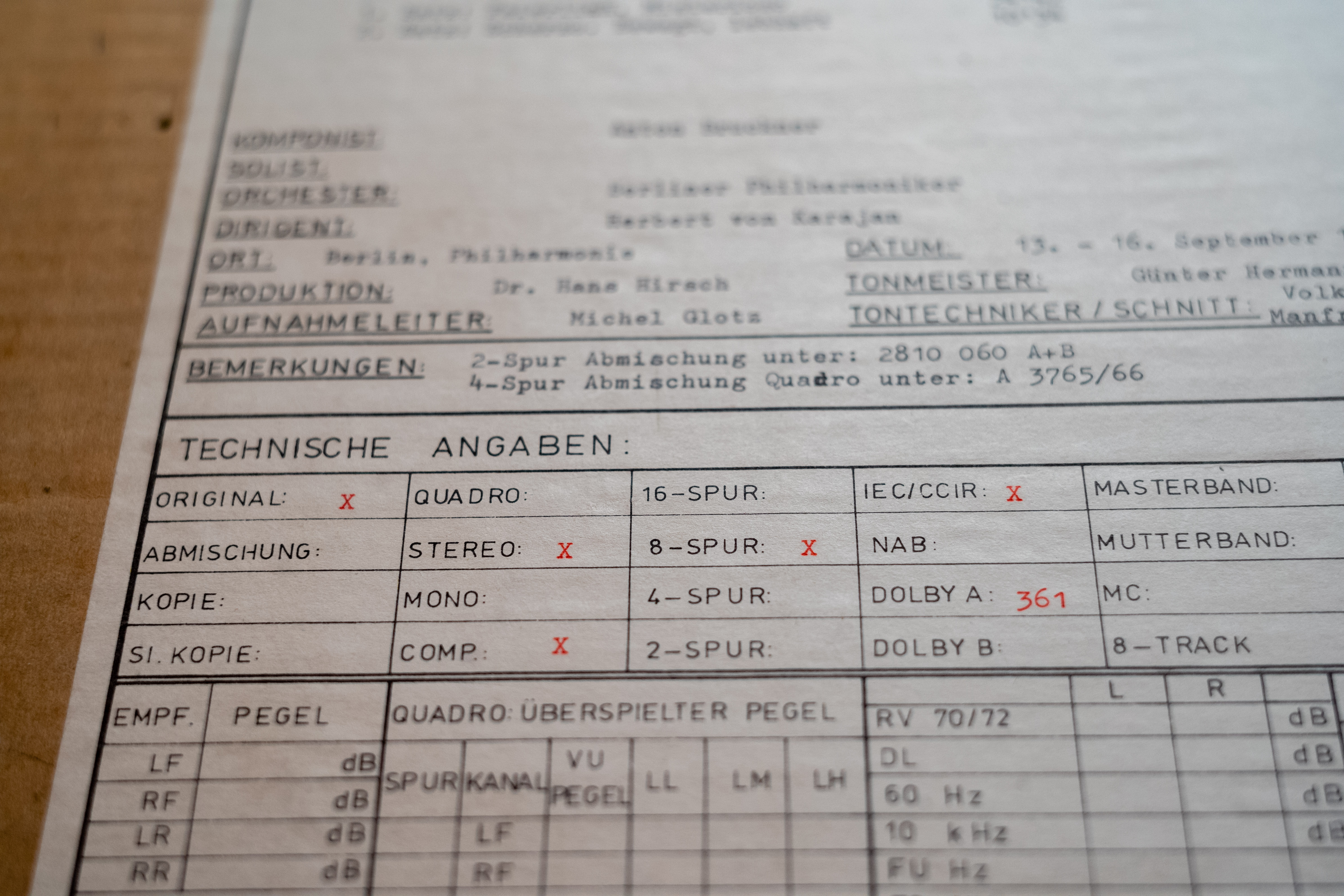
Beyond this Karajan Bruckner set, what this now means is that a huge amount of the later analogue DG catalogue is now available to be given the OSS treatment. What riches await us!
Apparently, with the move to 8-track, DG continued to record with the possibility of quadraphonic/surround releases in mind (although this never happened). So these 8-track tapes retain the two tracks of ambient information which were also a feature of the 4-track master tapes reissued earlier in the OSS series. As a result we will be continuing to get that huge soundstage and three-dimensional quality that so distinguished the earlier OSS releases.
As to the first three symphonies in the Karajan cycle, as mentioned above, these were recorded digitally, and were always felt to be a considerable step down sonically from the rest of the cycle that was recorded all-analogue. However, I have every confidence that Maillard and cutting engineer Sidney C. Meyer will have wrought every ounce of sonic goodness out of both these compromised digital masters and the 8-track analogue masters for the later symphonies.
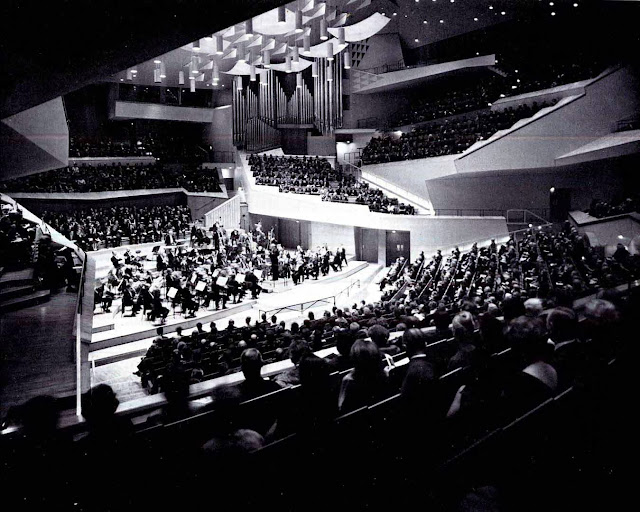 Interior of the Berlin Philharmonie, a masterpiece of modern architecture that revolutionized concert hall design (architect: Hans Scharoun)
Interior of the Berlin Philharmonie, a masterpiece of modern architecture that revolutionized concert hall design (architect: Hans Scharoun)
Recorded in the Berlin Philharmonic’s own concert hall, the Berlin Philharmonie, Karajan’s cycle - released between 1975 and 1981 - has, as I mentioned earlier, long been considered a benchmark version of this extraordinary symphonic cycle.
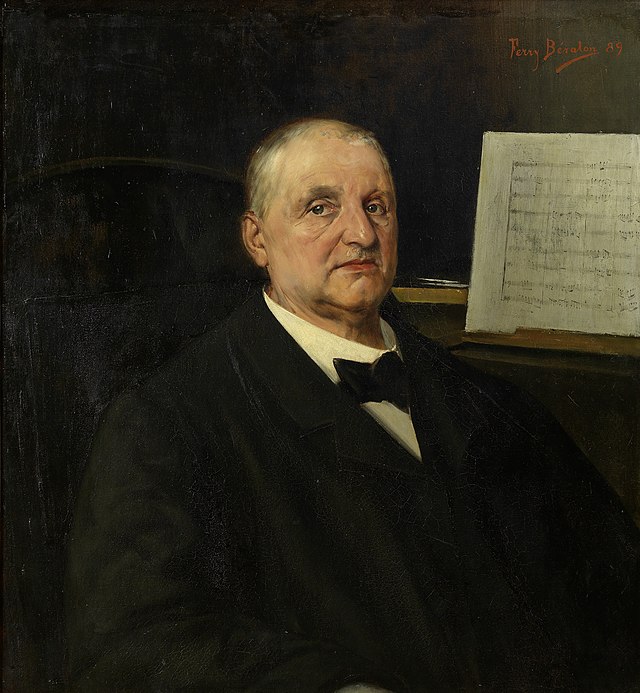 Anton Bruckner
Anton Bruckner
I bought all the original LPs as they came out, and for DG records of the period they sounded really good (with the exception of the digitally recorded Symphonies 1-3). This was how I got to know these works. Since then, Bruckner’s epic, grandiose conceptions have become amongst the most reliable sellers in the classical charts, and there are a plethora of first-rate cycles and individual symphony recordings to choose from when it comes to lining your library shelves. However, Karajan - steeped in the music of Bruckner since his earliest days - remains one of the supreme guides in the symphonies, listening to which can be a transcendental experience in the right hands.
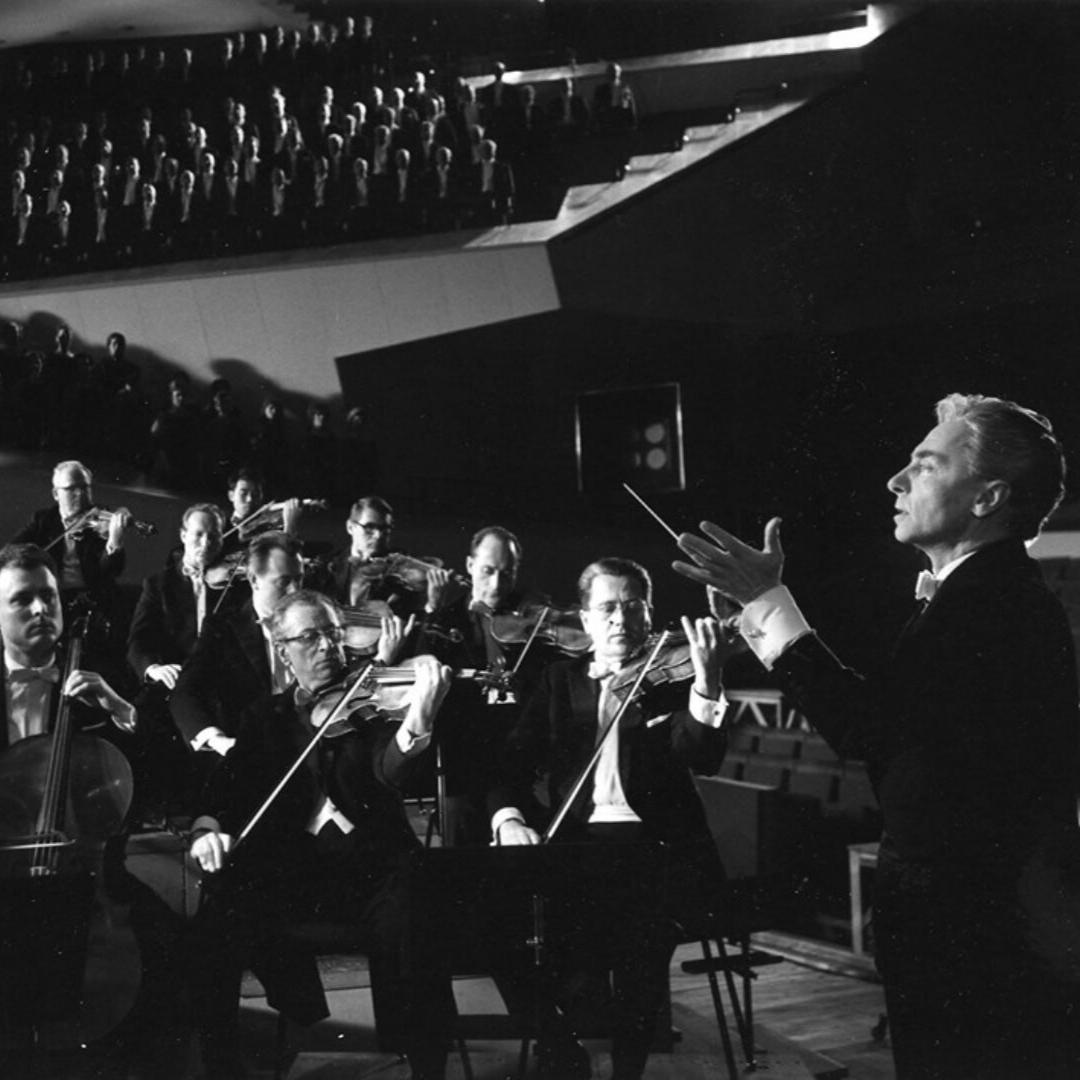 Karajan recording Beethoven's 9th Symphony in 1968, in the Berlin Philharmonie. (Photo: Siegfried Lauterwasser, Karajan Archive)
Karajan recording Beethoven's 9th Symphony in 1968, in the Berlin Philharmonie. (Photo: Siegfried Lauterwasser, Karajan Archive)
On the basis of previous OSS reissues, I can only imagine how great this set is going to sound, even the digital recordings. Again as mentioned above, but worth re-emphasizing, DG and EBS have also made the very smart decision to split some of the symphonies over a greater number of LPs than on the original releases, thus obviating the sonic perils of cutting overlong LP sides - a decision to be applauded. I am practically drooling at the prospect of listening to these classic recordings in their new OSS incarnation - and you should be too!

I anticipate there will be quite a bit to discuss with regards to the technological advancements inherent in this momentous release, and what those advancements mean in terms of where the OSS reissues go from here. Visions of sonically rejuvenated classic recordings from across the entire analogue DG catalogue are dancing before my eyes: Karajan in Berlin; Giulini in Chicago; Abbado in London and Vienna; Ozawa in Boston; Carlos Kleiber, Eugen Jochum, Karl Böhm, Martha Argerich, the Melos Quartet - the list goes on and on….. And let’s mention here the catalogue of the legendary Italian pianist, Maurizio Pollini, who just passed away. How amazing would it be to get some of his records given the OSS treatment.
As to this Bruckner set, according to DG’s press materials:
“Housed in a slipcase, with O-card, eight gatefolds and one single sleeve, 17 LPs are presented with artwork based on the respective original releases, the original liner notes, and additional material including facsimiles of recording protocols and artist photos.”
This is a limited edition of 2000, and I predict it will sell out if not before, then soon after its release date (August 2nd in Europe), so I recommend you preorder your copy sooner rather than later.
At the moment this set is only available for pre-order directly from the DG Shop. A wider pre-order date from other retailers is currently set for May 31st.
